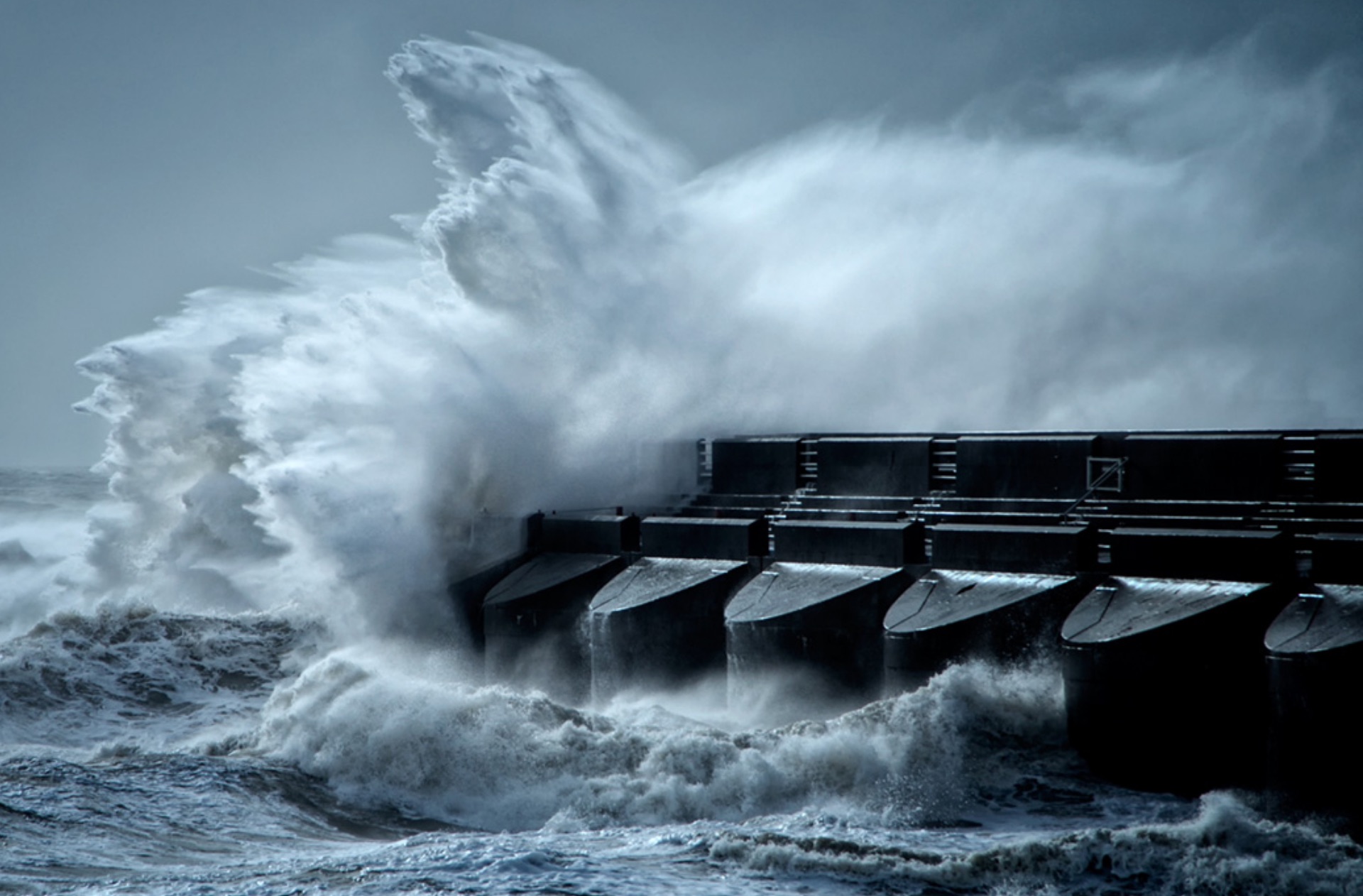The earth aware days have arrived. April 22, 2020 will mark the 50th anniversary of Earth Day. Just as active managers use shareholder resolutions to address corporate governance, social, and environmental change, on the other side of the trade are individuals driving the demand of goods and services. Understanding your personal metrics and carbon footprint amidst this symbiotic relationship is an empowered act.
I grew up in Texas, and as a tomboy, spent much of my energy in nature catching horntoads and building tumbleweed forts. My wildcatter grandfather, “Big Jim,” as he was known, was no stranger to risk-taking and betting on shale deposits. He navigated through multiple boom and bust cycles in the oil business during his 50-year career, including OPEC disruptions and the Texas Recession of the 80s.
How I went from a Texas wildcatter family to a climate advocate frames the value of advocacy and impact as a mechanism to direct capital towards a regenerative economy. In college, my interest in the natural world grew with the discovery of wind and solar energy, and I will never forget my first advocacy engagement with my grandfather.
He stood 6’4, listened more than he talked, and was what you would call “a man’s man” when it came to business. One day, over breakfast, I proposed he earmark a portion of operating profits towards research and development of alternative energy, to which I received thunderous laughter in response. He replied that building was cheap, energy was cheap, and alternatives were not only impractical, but start-up costs for wind and solar prohibited it from becoming a viable industry any time soon. Regardless, I was undeterred and my desire to birth a low carbon (CO₂) revolution continued to grow.
After college, I established a career in financial services, seeing it as a great sector for women to make a difference. In 2008, when WT Crude topped $149 a barrel, I again reached out to my grandfather. “What about now?”
After a pause and no laughter, he said that while plenty of oil is left, all the easy oil is up, and so alternative energy now made sense.
Just as my grandfather never envisioned Crude topping $149 a barrel, I don’t imagine any of us anticipated the recent FRSB Economic Letter¹ related to climate change or the recent Mercer report: Investing in a Time of Climate Change – The Sequel, which called climate change the existential threat of our time:
“The last time the global mean surface temperature was comparable to today was more than 100,000 years ago. The last time CO2 concentrations were as high as today (over 400 ppm) was three to four million years ago.”²
Earth Day underscores the importance of personal carbon examination for all of us, and here are three easy things we can do right now to better understand our carbon footprint and make strides towards a net zero world:
-
Measure: Establishing our baseline
Our carbon footprint describes the amount of carbon that is emitted as a result of our choices. This footprint is influenced by the mix of utilities in your area. For example, the State of Washington, where I reside, is a leader in the country deriving 44% of energy from renewable sources, second only to Oregon.ᶾ The amount of hydroelectric energy produced at the Grand Coulee Dam on the Columbia River produces electricity for 2.3 million households per year, accounting for 25% of U.S. production.⁴ To learn more about your state, click here. ⁵
There are several other pieces of personal information that can also be helpful to know:
Home: A recent utility bill
Transportation: Vehicle type, MPG and mileage/any transit usage/ flight mileage
Food Consumption by category: Breads/dairy/fruits/meat/vegetables
Services: Average monthly spending (i.e. healthcare/education/entertainment)
Goods: Average monthly spending (i.e. Amazon Prime /Costco/Home Depot/Staples)
Establishing our carbon footprint helps to form awareness. Any number of websites offer free carbon footprint calculators and comparison tools alongside educational resources. Type “climate footprint” or “carbon footprint” into any search engine and try a couple out.
Here are a few of my favorites:
CoolClimate Network – CoolClimate Calculator is research based out of UC Berkeley
CarbonFootprint.com – UK-based free calculator with loads of tips and carbon credit offsets
The Nature Conservancy – Arlington, VA-based charitable environmental organization
-
Redirect: Knowledge is the gateway to reducing CO₂ emissions
The average US resident creates 20 tons of CO₂ emissions annually, according to an MIT study. whether a person can live climate-neutral is a question of lifestyle choices and making improvements over time. Consider adopting these actions to reduce your footprint. Replacements naturally occur in the life of items around the house as daily habits shift.
Save Energy: Retrofit your house, travel less, and use efficient vehicles and appliances.
Clean Energy: Switch from gas and oil to electricity.
Food: Eat less meat and dairy, waste less food. Buy locally, it is thousands of miles fresher.
Goods: Employ a refuse-reduce-reuse-recycle mindset and buy locally produced goods.
-
Offsets: Purchase Carbon Credits for remaining unavoidable emissions
A carbon offset compensates for our emissions by funding an equivalent CO₂ savings elsewhere. It is important to remember that when we buy these offsets, we are paying someone to cut emissions so we can keep ours. To effectively address climate change, individuals, businesses, and government organizations must take responsible steps to curb CO₂ emissions as much as possible before seeking an offset solution for any remaining unavoidable emissions. When a balance is struck between emissions and offsets, one is said to achieve “carbon neutrality.”
In accessing carbon credits today, most are verified by a third-party standard. The acronym VALID is loosely used as a guide. Projects must abide within the following parameters:
Verifiable – The offset uses a robust audit process like Gold Standard or Kyoto Protocol.
Additional – Would it occur anyway without the investment raised by selling offset credits?
Leakage avoidance – This means the emissions are not moved elsewhere beyond the boundary.
Impermanence –The project is sustainable; the reductions are not reversible.
Double-counting – Carbon reductions are claimed only once, not counted multiple times.
A few other tips to keep in mind when buying carbon offsets: Rather than buying trees and promised emission cuts which are often thin on independent research, consider giving to Gold Standard-approved wind or solar energy projects instead. You can find Gold Standard VER projects on the Gold Standard website and you can buy Gold Standard CERs directly through the UN’s platform. DIY carbon offsets related to educational projects are another interesting opportunity at Skeptical Science.
Thirty years ago a proliferation of horntoads sparked my curiosity about the natural world. Today they are a threatened species bred in captivity.⁶ With the increase of drought- prone areas, our kids and grandchildren will inevitably find more tumbleweeds for building forts. Given the consensus of expert, peer-reviewed scientific literature as undisputed, the easy days of “climate” are over. What lies ahead requires planetary cooperation to shift towards a low-carbon economy. What are you doing with the next 365 days of your life on planet earth?
Here’s to making it count.
Endnotes:
- Federal Reserve Board of San Francisco. Glenn D. Rudebusch, “Economic Letter Climate Change and the Federal Reserve.” March 2019 available at https://www.frbsf.org/economic-research/publications/economic-letter/2019/march/climate-change-and-federal-reserve/
- Mercer LLC. “Investing in a Time of Climate Change – The Sequel.” 2019, available at https://www.mercer.com/our-thinking/wealth/climate-change-the-sequel.html
- US News and World Report. Zoe Chevlier, “These States Use the Most Renewable Energy.” July 2018 available at Website: https://www.usnews.com/news/best-states/slideshows/these-states-use-the-most-renewable-energy?slide=10
- 3
- “CoolClimate Maps,” CoolClimate Network, University of California, Berkeley; accessed 11 April 2019, https://coolclimate.berkeley.edu/maps.
- National Geographic. Lori Cuthberth, “Texas Horned Lizard, Once Common, Now Must Be Bred Captive.” October 2018, available at https://www.nationalgeographic.com/animals/2018/10/horned-lizard-texas-endangered-threatened-species-video-news/



